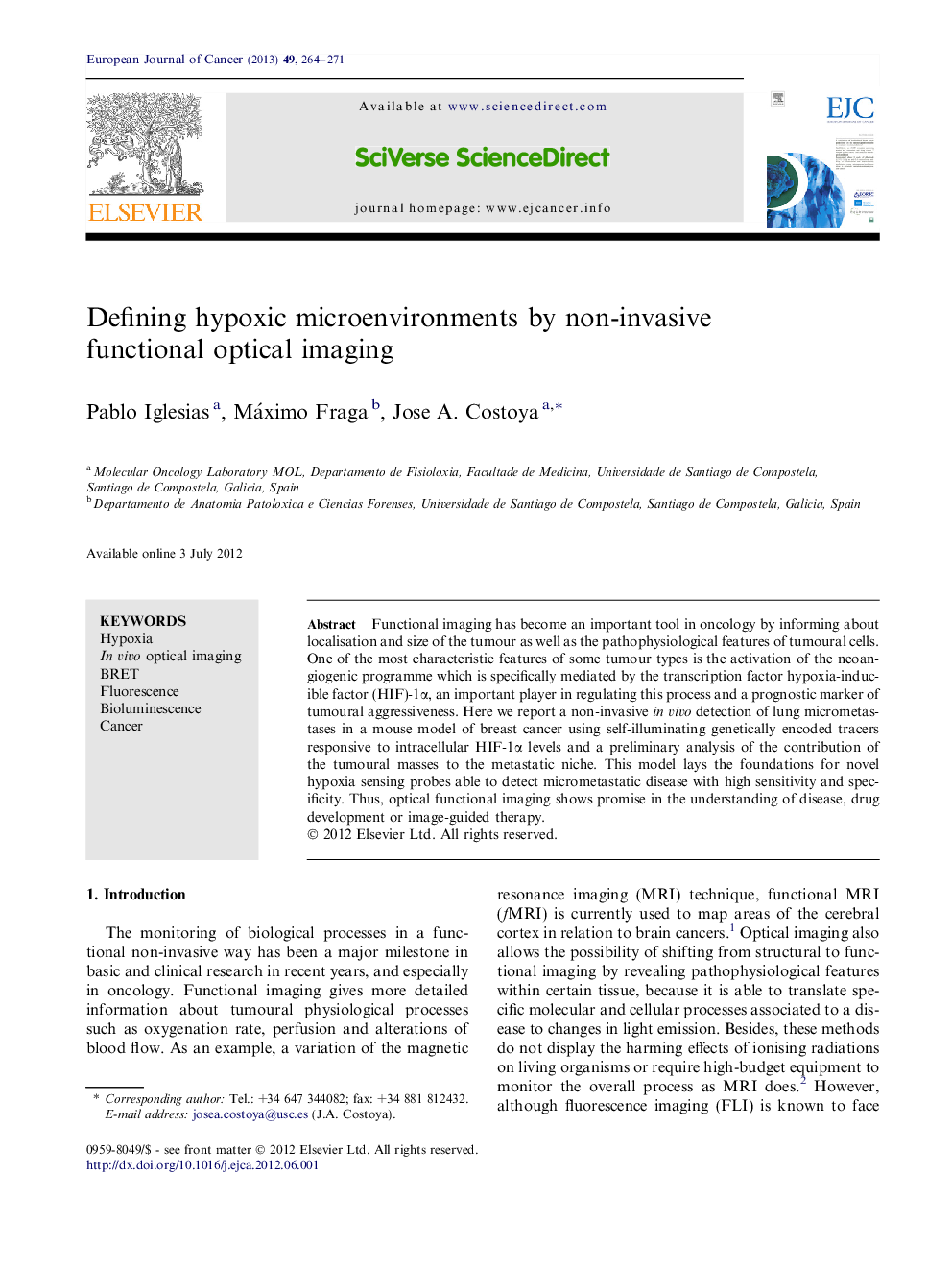| Article ID | Journal | Published Year | Pages | File Type |
|---|---|---|---|---|
| 8445421 | European Journal of Cancer | 2013 | 8 Pages |
Abstract
Functional imaging has become an important tool in oncology by informing about localisation and size of the tumour as well as the pathophysiological features of tumoural cells. One of the most characteristic features of some tumour types is the activation of the neoangiogenic programme which is specifically mediated by the transcription factor hypoxia-inducible factor (HIF)-1α, an important player in regulating this process and a prognostic marker of tumoural aggressiveness. Here we report a non-invasive in vivo detection of lung micrometastases in a mouse model of breast cancer using self-illuminating genetically encoded tracers responsive to intracellular HIF-1α levels and a preliminary analysis of the contribution of the tumoural masses to the metastatic niche. This model lays the foundations for novel hypoxia sensing probes able to detect micrometastatic disease with high sensitivity and specificity. Thus, optical functional imaging shows promise in the understanding of disease, drug development or image-guided therapy.
Related Topics
Life Sciences
Biochemistry, Genetics and Molecular Biology
Cancer Research
Authors
Pablo Iglesias, Máximo Fraga, Jose A. Costoya,
